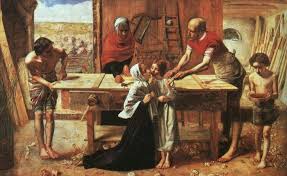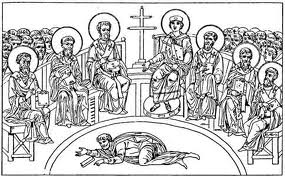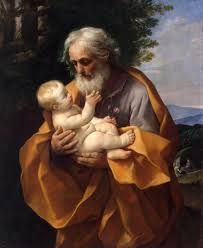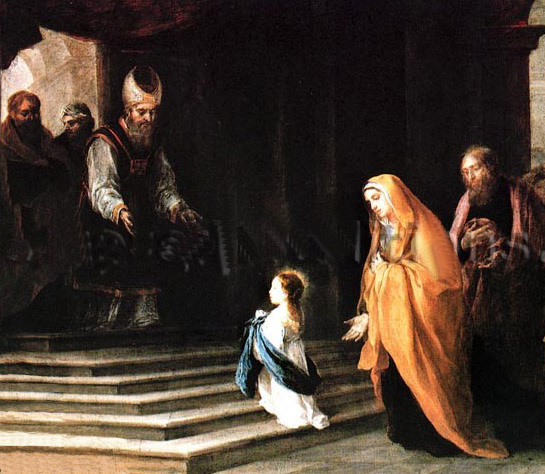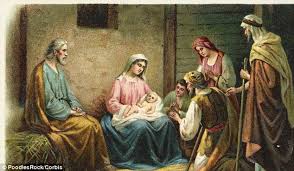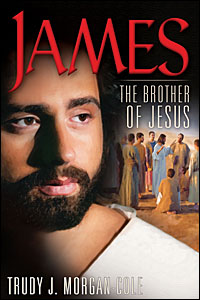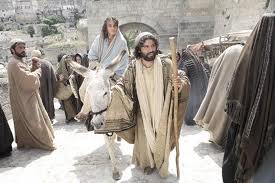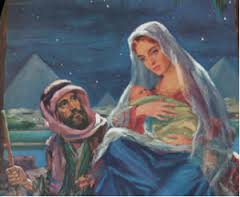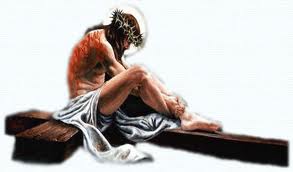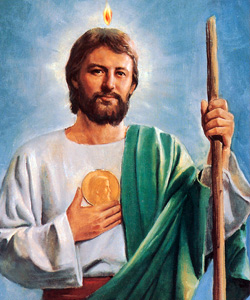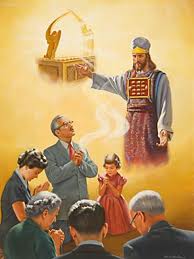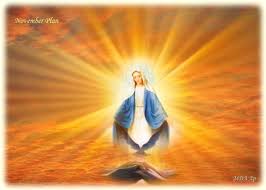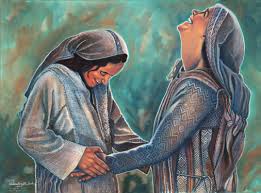|
The Elder Cousin-Brothers of Jesus (It's not in your Bible, but millions believe it to be TRUE!) |
|
Before the Council of Nicaea called into existence by Constantine the Great, Emperor of the Roman Empire in 325 AD, Christians were free to argue and debate a great number of subjects, and indeed they spent a large portion of their time doing just that. Some of these Early Church Fathers were more famous and respected than others, and their opinions have survived, and come down to us in bits and fragments of their writings, which are held to be of great value to researchers and theologians of today, some of which are still interested in what Christianity was like before it became the official accepted religion of the Roman Empire. There were winners and losers in all of these debates and arguments, and the fate of the losers was generally to have all or most of their propaganda and literature destroyed by the winners, and were often lucky to escape with even their lives. Even after Constantine's decrees of religious toleration, it was hazardous to have a religious opinion that varied from that held by the group in power in that era, which eventually became the Roman Catholic Church, whose supreme leader at that time was the Bishops of Rome, later to be known as the Roman Catholic Popes. The Council of Nicaea
gave us the Nicene Creed which is considered to be the doctrinal basis for most Christian churches today, whose members are allowed to debate on other subjects, but not on those decided on by the Christian Bishops at Nicaea. They decided that Jesus Christ was and is God as well as Man, that he preexisted as God prior to his "Incarnation" as a baby in Bethlehem, and that after he was crucified and rose from the dead, he returned to heaven to sit on the right hand with his Father, the Jewish God Yahweh or Jehovah. Together with a third God-Person, the Holy Spirit, these Three Persons as One God rule the known Universe with particular attention to this world, and we who live on this planet. Problematic to the Bishops who made these decisions at Nicaea in 325 AD and a later Council held at Constantinople later in the 4th century was Jesus' real relationship to those known as his brothers and sisters (or "brethren") in the those Gospels that were by then accepted as most genuine in that era, namely, Matthew, Mark, Luke, and John. There were also a great number of other gospels and religious books in existence held to be of lesser importance and reliability, and also the Epistles of Paul, whose counsels and opinions even by then were held to be the basis for most Christian beliefs and practices. By the second century after Jesus' birth, seventy years or more after his death by crucifixion, and thirty years or more after the destruction of Jerusalem and its temple by Rome the by now persecuted Christians were becoming interested in the personal details of the life of their original leader Jesus Christ, and certain writings called the INFANCY GOSPELS became available for them to read of dubious origins and authorship. In some of these INFANCY GOSPELS Jesus had brothers and sisters that were older than he was who were not really his brothers and sisters in a biological sense but former children of Joseph, who was a widower, his previous wife before the Virgin Mary having died.
One such Gospel I have provided on this web site for my guests to read is called "The Protevangelion" or "Protevangelium Jacobi", also known as "The Birth of Mary", thought to have been written by James the Less, who was one of those who claimed to be one of the biological brothers (or perhaps cousins) of Jesus Christ.
The Presentation of the child Virgin Mary to the High Priest in the Jerusalem Temple in "The Infancy Gospel of James" What seems more certain is that he did obtain and hold the office for many years of the Christian Bishop of Jerusalem. His less controversial book, the Epistle of James is included in the New Testament canon, as is the book written by his brother Judas, called "Jude" so as not to be confused with Judas Iscariot, the betrayer of Jesus at the crucifixion. The Epistle of Jude is also in the New Testament, being the last book featured before Revelation, also known as The Apocalypse in some Bibles.
A few artists, but not many, have fallen into line with the Catholic story, developed over the ages, that Joseph was a widower who had a rather large family before he became the husband (spell that c-a-r-e-t-a-k-e-r ) of the "ever-virgin" mary. The artist whose politically and theologically "correct" picture of the Holy Family at the birth of Jesus shown above has included a daughter, shown second from the right (no beard --- breasts). The tallest figure on the right may be intended to be a shepherd, and indeed we can if we wish to assume all the males in the picture other than Joseph are shepherds, but Joseph sitting there motionless and expressionless and the young woman there beside Mary shows the intention of the artist. The one kneeling in front of Mary may be the active carpenter of Joseph's other sons. Perhaps Jesus will inherit his job later. The fact that there are so few pictures like this one shows how hard it has been for the Church of the Middle Ages to actually sell this idea to the majority of Christians, especially so now that most modern Protestant Churches fail to accept the Catholic dogma of the "Ever-Virgin Mary" -- now elevated to "Queen of Heaven."
The idea that Jesus had brothers and sisters that were not really his biological brothers and sisters, and a father named Joseph who was very much older than Jesus' mother the Virgin Mary has become so popular over the past almost two thousand years that I have recently compiled a "Bible Study" in which I am attempting to refute this idea, which I consider to be false and invented only to provide an almost divine status for Jesus' mother Mary which was never really warranted and based on made-up stories that have become traditions of the Roman Catholic Church. As a Protestant, and the son of Protestants, I have a right to go back to a more sure Biblical foundation, which I am doing here.
Whatever Happened to Jesus “Our Advocate”? Now I’ll not burden my readers with a long account of my Adventist childhood and upbringing, but let me just say that I was glad that I was taught that Jesus was my advocate before “the Father” and that I understood that he might just be able to understand what it was like to be a teenage boy because it was my understanding from my parents and my fellow church-members that Ellen White, our “prophetess” had assured us that Jesus himself was once a teen-ager and would always be a human being (besides being divine). I ignored the “besides being divine” part because it was meaningless to me. I was also assured (from the same author) that Jesus was at that time in a Heavenly Sanctuary participating in a very long “Yom Kippur” (Day of Atonement) ceremony that had gone on for many years at that time, and was expected to continue for a definite (but unknown) length of time in the future, during which time, I, as an Adventist, had nothing to fear from either Jesus or His Father so long as I tried to live a good life and attended church on Saturday, as Christ had while he lived in Judaea and Galilee, not “Heaven”. This confidence was built on my understanding that Jesus was a Jewish High Priest and knows what every Jewish High priest knows. What it’s like to be a human being living the life of a human being. Later I came to understand a little of what immaculate conception meant because some of this strange and weird theology had traveled the 20 miles between Notre Dame University to Andrews University in Berrein Springs, Michigan and trickled down to us folks going to church at the “grass roots”. What I began to sense was that I had been robbed of my childhood “High Priest” and someone I didn’t know and couldn’t know had taken his place. I was no longer a “relative” – no longer one of the desposyni. In my former High Priest’s place was a God posing as a “man” and not doing a very good job with his pantomime show.
Ordinary Rank and File Catholics Robbed Also All my life from mid-grade school on I have had Roman Catholic friends. Indeed my first child-hood sweetheart was a little blond-headed girl named Laura Robishaw who lived in Derby, Maine in a Bangor & Aroostock railroad row house one street over from our street. My last Roman Catholic girl-friend befriended me after my Seventh-day Adventist wife left me to live nearer a Seventh-day Adventist junior academy, taking 3 of our children with her. From these and other Catholics I understood that Mary, as Jesus’ totally human mother, was the same kind of advocate and friend to them as Jesus was to me when I was younger. Pope Pius IX on December 8, 1854, with his papal bull Ineffable Deu robbed all Catholics in the same way I was robbed. But especially Catholic young girls and women. How could a Jewish girl baby born without sin, and with no inclination to sin, and no boys allowed to tempt her, even her husband Joseph, possibly understand the problems of being a Catholic wife and mother? In families where the babies are born like clockwork, one a year (or more). Not long, relatively speaking, after Priest and Professor Martin Luther nailed up his 95 Theses on the door of the Catholic Cathedral in Wittenburg, Germany, he also made one of the Catholic “sisters” (nuns) his wife, because he came to fully believe in the humanity of Jesus Christ. Which meant to Martin Luther that Jesus also felt “carnal desire” as Martin Luther himself came to know it. Following Luke, to the End of His Gospel Trail! The Gospel of Luke, in spite of what the present crowd of Form Critics such as the Jesus Seminar have to say, was not written decades after Christ’s crucifixion, but about 41 AD, a mere 8 years after Christ’s crucifixion and resurrection. Jesus himself was available to help this author with those details he needed help with, and these “joint authors” had a hidden agenda. To provide what would later become the Roman Catholic church with beautiful rituals to be used in the worship of Jesus and Mary his mother, while at the same time providing a hidden framework of details, places, and historically reliable dates to document the real lives of both these totally human beings. (By “totally human” here I mean “as human as other humans” – all of us are born with divine potentials, whether or not we develop and use them.) “Luke” was dedicated to Theophilus Annas, the brother of Jonathan Annas (James or Jacob of Alphaeus, mentioned before) and Matthew Annas (“Levi” the priest, “son of Alphaeus”) during the short period of time while Theophilus was High Priest at Herod’s Jerusalem Temple. This event has a historical date because Josephus mentions it in connection with an event of tremendous historical importance to both Jews and the Roman Empire, the death of Tiberius Caesar and the accession of Gaius Caligula to become Emperor of the Roman Empire. Caligula soon made his friend Herod Agrippa I king of Judaea at a time when both Theophilus Annas and later Matthew Annas (Jesus’ friend, apostle, and “Gospel Writer”) each served a term as High Priest of all the Jews. The author of “Luke” begins this “trail of discovery” with a Priest named Zechariah, the father of John the Baptist, who is NOT listed among the Jerusalem temple priests because he was an Essene priest functioning in the “hill country of Juda” (). We know he was a high priest because in Luke chapter one he is “offering incense with all the people waiting outside” () It was “Yom Kippur” (Day of Atonement) always performed (except in Seventh-day Adventism—which teaches an infinitely expanded version of Yom Kippur) on the 10th day of the 7th month – September usually. But September of what year? Enter the Star of Bethlehem of Matthew 1: and back off one year, because John the Baptist was born 6 months before Jesus Christ. If Jesus was born the year of the “star” and John was born in September of the previous year, then everything can be dated, including the non-immaculate conceptions of both John the Baptist and Jesus and that both occurred in “the hill country of Juda” where both Zechariah the priest and his wife Elizabeth “cousin” of Mary the mother of Jesus were for a period of time specified by Luke in a way in which it can be discovered.
The Barren Elizabeth was Easily Cured Before the re-discovery of both the ruins of the Qumran Monastery and the Dead Sea Scroll caves nearby in the late 1940s and early 1950s, the “hill country of Juda” of Luke 1 () didn’t mean much to Bible readers. Now it means a lot, but people avoid this meaning because they wish to keep the Gospels totally allegorical so they can teach and preach what they’re used to teaching and preaching because familiar is always better and our way is always the only truthful, right, and useful (to us) way. If Christian Theologians and Church Leaders could prove that the Essenes never existed and that Jesus, Paul, and the 12 Apostles were not Essenes they would indeed do so, and spare no effort nor expense to do so. This being impractical or maybe even impossible, the next best thing to maintain the all important status quo, is to ignore the Essenes, never talk about what they taught and did, and by all means not emulate their totally impractical lives of holiness, rigid Sabbath-keeping, and vegan diet. It’s so much better to be “not under the law, but under grace.” Josephus, the famed Jewish historian, in Antiquities () documents that the Essenes practiced strict celibacy most of the time, but also that certain members of important Essene families “preserved their bloodlines” Zachariah “of the (priestly) course of Abiather (“Abai”) was one of these important Essene families. Elizabeth, his wife, was “barren” while he served as high priest because he was not allowed to have sexual intercourse with her. Once Gabriel gave him permission and relieved him of his duty temporarily, Elizabeth’s non-pregnancy was soon remedied. And after six months (June of 8 BC) she was 6 months pregnant (babies can be felt to move by their mothers at that time). Luke () documents that her “cousin” Mary came to visit Elizabeth “in the hill country of Juda” at that time, and stayed with her until “3 months” (the third month of 7 BC), at which time Mary returned to her “own house”. Once we admit that both Elizabeth and Mary were Essenes, we know where Mary’s “house” was (1 Kilometer south of the Qumran monastery) and what it was used for (to deliver illegitimate or unwanted babies who were adopted by the Essenes as “the lambs of God”). Much of what is puzzling and undocumented about the birth of Jesus Christ at this point on our “trail of discovery” now has a date (March of 7 BC) and a place (a now missing wooden structure 1 kilometer south of the Qumran monastery). What we still lack is a time of conception for Jesus. Simple subtraction of 9 months (normal human gestation) from March, 7 BC, identifies June of 8 BC as the proper date. The very same date on which Mary walked down a mountainous desert trail full of wild beasts and occasionally robbers (consider the parable of the “Good Samaritan”) to visit her “cousin” Elizabeth. Now Mary was a virgin teenager, but she was not insane, and not likely to take such a trip in the heat of June on one of the hottest places on earth (Dead Sea Area) in the daytime and alone. She was, according to Matthew and also Luke (), betrothed to Joseph, a descendent of King David at that time. Now I ask you, who else but Joseph would be escorting his betrothed Mary along this desert trail at night in June of 8 BC.? Perhaps it’s just coincidental that Jesus Christ was born 9 months later. Perhaps there’s some sort of mysterious connection between these two events – one in June of 8 BC and the other in March of 7 BC. It’s up to you to think this over, and if it’s possible for you to do so, realize that we do indeed have a High Priest who is human, and tempted in all points like as we are. Accept if you must all this Jesuit nonsense about Jesus’ younger brothers, all children of one woman, Jesus’ mother, and one man, Jesus’ human father, being instead another family of older children belonging to Joseph, or perhaps Jesus’ “cousins” – for me, I’ll accept all the evidence left for me, and others like me, who have a brain, and know how to use it, on Luke’s desert trail of discovery –“in the hill country of Juda”.
|
|
Luke's Nativity Story - Click Here! |
